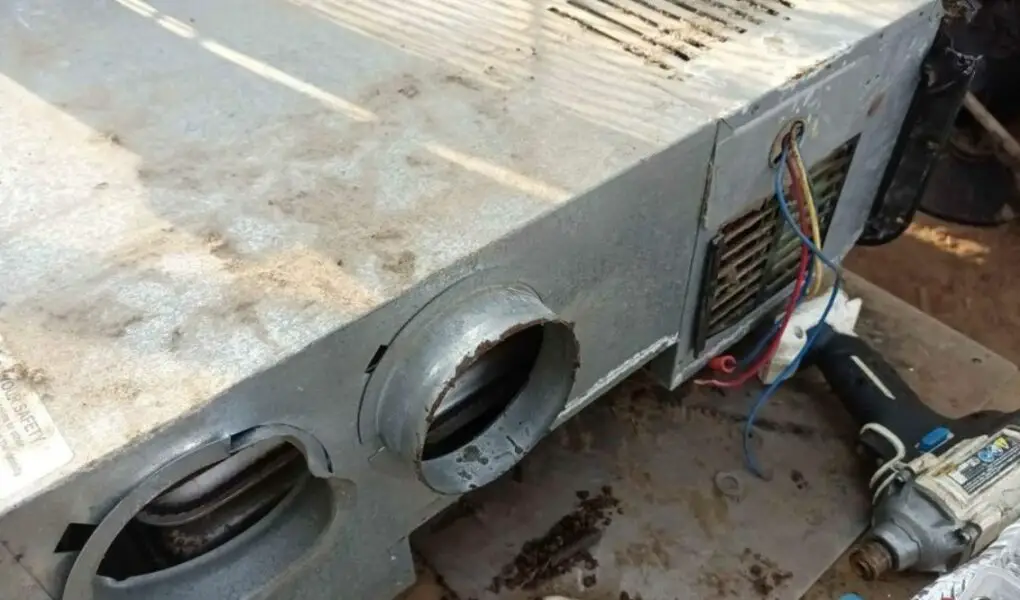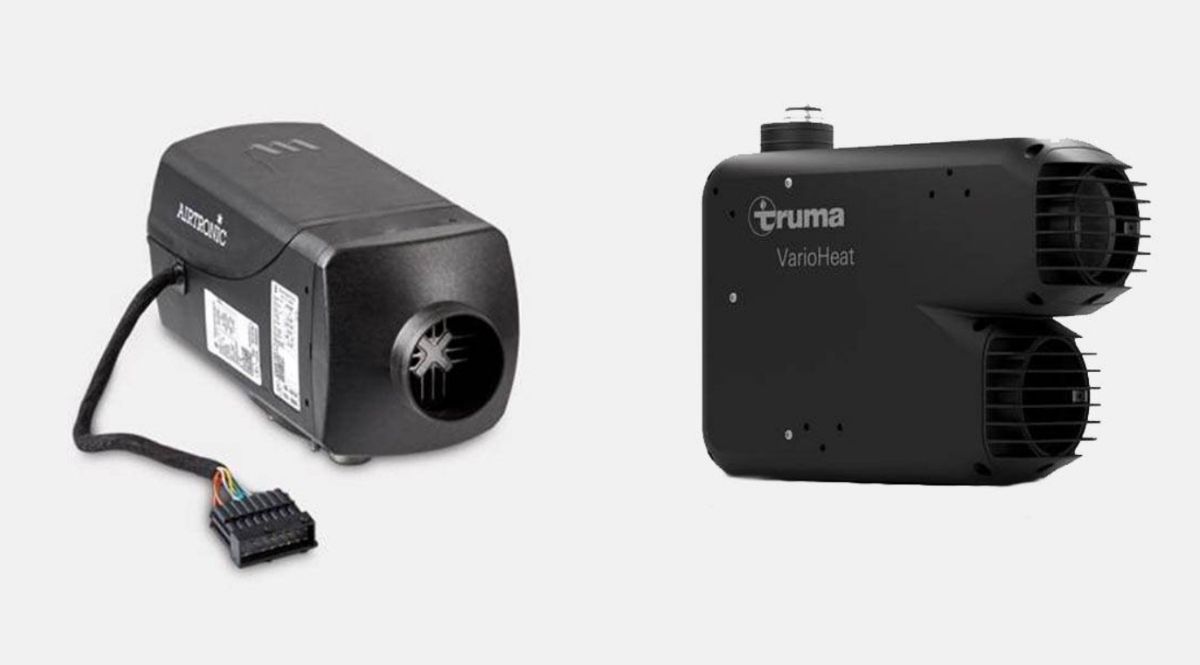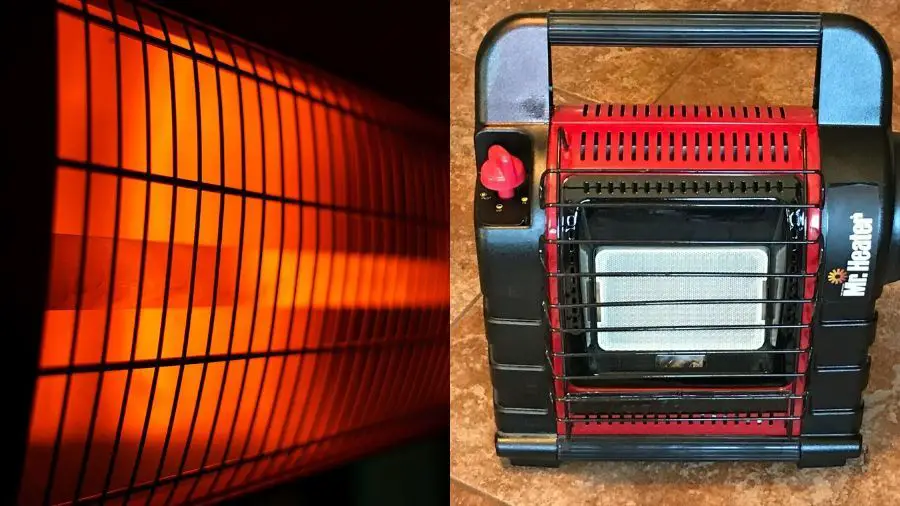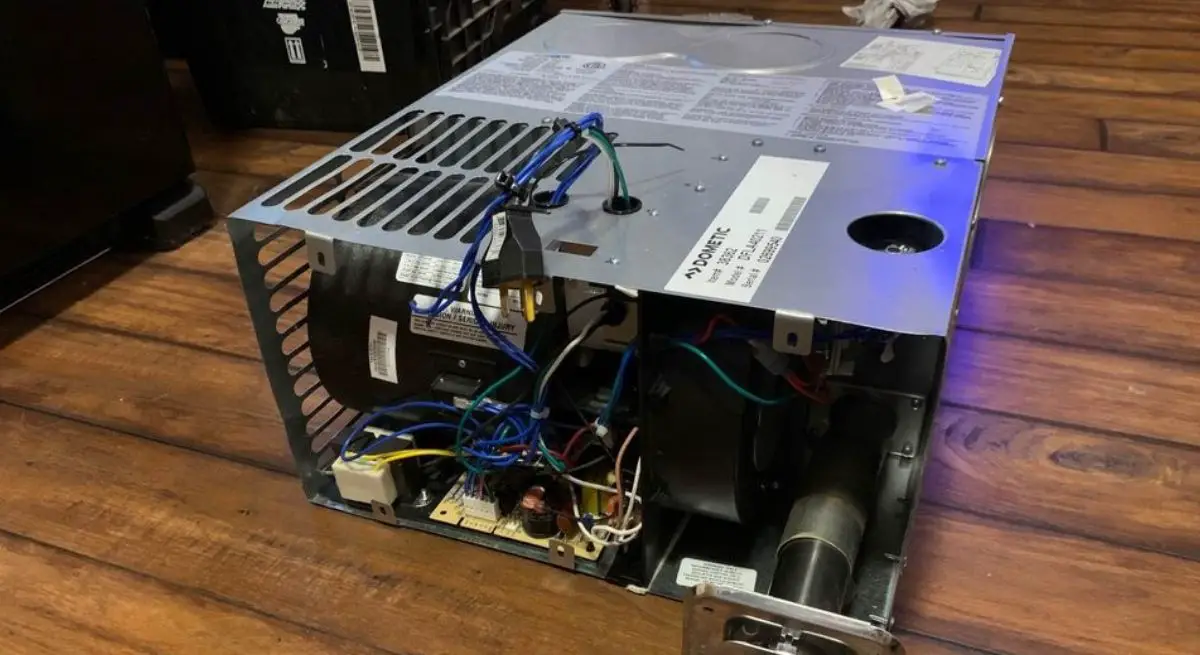Many things can go wrong with your RV furnace but don’t worry; we’re here to help. This article will outline some of the most common problems people experience with their RV furnaces and provide solutions for each one. So, we have you covered whether your furnace is making a high-pitched noise or won’t light but keeps clicking. Keep reading to learn more.
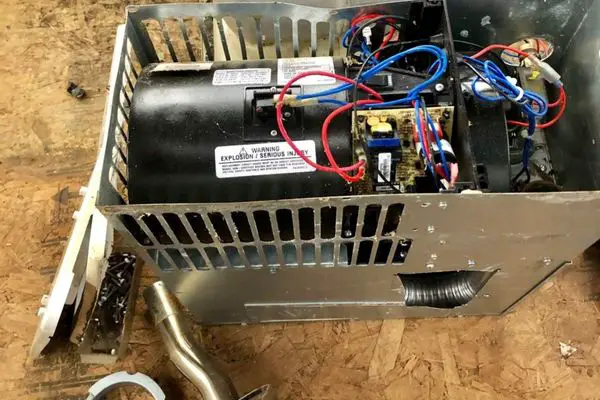
My RV Furnace Gets Hot, But No Air Comes Out?
If your RV furnace gets hot, but no air comes out, the most likely culprit is a clogged filter. RV furnaces have very small filters that can easily become clogged with dust and dirt. The best way to solve this problem is to replace the filter.
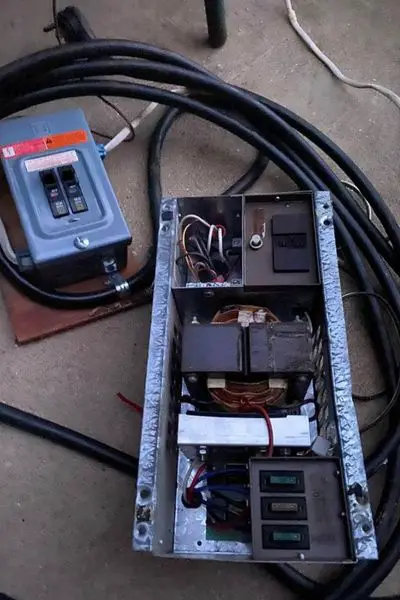
If your air filter is clogged, heat cannot enter your furnace’s heat exchanger and will overheat. If the heat exchanger doesn’t get enough airflow, it can overheat and trigger your furnace’s limit switch, which shuts off the burners. As a result, there will be no heat, and all incoming air will feel chilly or not come out. A furnace that runs constantly but doesn’t heat properly can also overheat and shut down.
My RV Furnace Fan Keeps Running & Won’t Shut Off?
If your RV furnace fan keeps running and won’t shut off, the most likely culprit is a faulty limit switch, or the thermostat may be set incorrectly.
The limit switch is designed to shut off the burners if the heat exchanger gets too hot. However, if the limit switch is faulty, it can cause the fan to run constantly. To fix this problem, you will need to replace the limit switch. This is a relatively easy repair that you can do yourself.
The fan limit switch is beneath the furnace hood and regulates when your furnace blower activates. The probe within the switch checks the temperature of the burner assembly to start the fan when the burners are warm, then turn it off once they’ve cooled down or when the thermostat shuts off.
Another reason the fan is constantly running is that the thermostat is set incorrectly. The thermostat should be “auto,” not “on.” If it is set to “on,” the fan will run constantly. You can also try putting your thermostat to a lower temperature than the existing room temperature, which will turn off the heater and prevent the thermostat from calling for more heat.
Wait for 3 to 4 minutes for the blower fan to cease operating if the furnace is in progress. If the blower fan is still blowing, then it’s likely that the actual thermostat temperature was too high. The fan is constantly running because of an excessively high setting.
RV Furnace Is On, But No Air Comes Out Of The Vents?
If you have an RV furnace with no air coming out of the vents, the most likely culprit is a clogged filter. If the filter has been replaced to no avail, the blower motor could need replacing.
Another possibility is that the blower motor is not working. The blower motor is responsible for circulating the air through the furnace and into the ductwork. If the blower motor is not working, then no air will be distributed, and you will not feel any heat coming from the vents. To test if the blower motor is working, you can turn on the furnace and feel around the vents to see if there is any airflow. If there is no airflow, the blower motor is likely the problem and will need to be replaced.
RV Furnace Fan Runs But Generates No Heat?
This problem can be caused by several issues, including issues with the fuel source, the limit switch, the gas valve, ignitor failure, or a broken control board.
If you have an RV and the furnace fan is running, but there is no heat, the first thing you should check is the fuel source. If you are using propane, make sure that the tank is full. If you are using natural gas, ensure the gas line is not turned off.
If the fuel source is not the problem, the next thing you should check is the limit switch. The limit switch is designed to shut off the burners if the heat exchanger gets too hot. However, if the limit switch is faulty, it can cause the fan to run constantly without any heat being produced. To fix this problem, you will need to replace the limit switch.
Another possibility is that the gas valve is not open. The gas valve is responsible for supplying gas to the burners. If the gas valve is not open, no gas will be provided, and the furnace will not produce any heat. To test if the gas valve is open, you can turn on the furnace and feel around the vents to see if there is any heat coming from the furnace. You will need to open the gas valve if there is no heat.
Another possibility is that the ignitor is not working. The ignitor is responsible for igniting the gas supplied to the burners. If the ignitor is not working, the gas will not be ignited, and the furnace will not produce any heat. To test if the ignitor is working, you can turn on the furnace and listen for a clicking sound. If you do not hear a clicking sound, the ignitor is likely the problem and will need to be replaced.
The last possibility is that the control board is broken. The control board is responsible for sending power to the ignitor and gas valve. If the control board is broken, the furnace will not produce heat. To test if the control board is working, you can turn on the furnace and listen for a clicking sound. If you do not hear a clicking sound, the control board is likely the problem and will need to be replaced.
RV Furnace Only Getting Warm?
This problem can be caused by a number of issues including a clogged filter, low fuel supply, or a faulty thermostat.
To fix this problem, start by checking your furnace’s filter and replacing it if it is dirty. If the filter is clean, check if the fuel supply is low and refill it if necessary. Also, make sure the fuel is properly connected to the furnace.
If you have checked the fuel supply and filter, and they appear to be fine, then the problem is likely with the thermostat. Try replacing the batteries in the thermostat and see if that solves the problem. If not, then you may need to replace the thermostat itself.
RV Furnace Fan Not Turning On?
Problems with the fan not turning on can be caused by several issues, including a blown fuse, a tripped circuit breaker, or a faulty blower motor.
Replacing a blown fuse is a simple task that anyone can do. To replace a blown fuse, remove the old fuse and insert a new one of the same size and type. If the problem is with a tripped circuit breaker, flip the breaker back to the “on” position. If the problem persists, you may need to replace the breaker.
The blower motor is responsible for turning the fan. If the blower motor is not working, then the fan will not rotate, and the furnace will not produce any heat. To fix this problem, you will need to replace the blower motor.
RV Furnace Makes A Loud Rattling Noise?
This problem can be caused by several issues, including loose screws, a loose blower wheel, or a dirty furnace. If loose screws cause the problem, tighten them using a screwdriver. If a loose blower wheel causes the problem, you must tighten the set screw that holds the wheel in place. If the set screw is too tight, you can strip it by over-tightening it. To avoid this, snug the set screw until it is tight, but do not overtighten it.
If a dirty furnace causes the problem, you will need to clean the furnace. First, turn off the power to the furnace and then remove the access panel. Next, vacuum any dirt and debris from the furnace. Finally, replace the access panel and turn on the power to the furnace.
My RV Furnace Makes A High-Pitched Noise?
This problem is usually caused by a loose blower wheel or low airflow. The blower wheel is responsible for turning the fan. If the blower wheel is loose or the bearings have worn down out, it will make a high-pitched noise as it turns.
Changing your air filter and opening all vents and registers can help increase airflow and reduce noise. If this doesn’t work, you will need to replace the blower wheel. The blower in your furnace is driven by a motor with bearings that may wear down due to age or overheating. Dirt accumulation is often the cause of overheating. As the bearings wear down, they will make a high-pitched noise.
To fix this problem, you will need to replace the blower wheel. First, turn off the power to the furnace and then remove the access panel. Next, use a screwdriver to loosen the set screw that holds the blower wheel in place. Finally, remove the old blower wheel and install a new one.
My RV Furnace Making A Rumble Noise?
A loud furnace can be caused by the need for maintenance, repair, or motor replacement. The first step is to clean all filters, ducts, and exhaust vents. A build-up of dust and debris can cause the furnace to work harder, making it louder.
Next, check for any loose hardware or broken pieces. Also, check the ductwork for any holes or leaks. Consider doing a fan cleaning and lube job if the furnace is over five years old. If the furnace is still loudly rumbling, it may be time to replace the motor. This is a more involved repair and will require the services of a qualified technician.
My RV Furnace Won’t Light But Keeps Clicking
If the furnace won’t light, but you hear the clicking, gas isn’t reaching the pilot light to ignite the gas. The ignitor will continue to click as it attempts to produce a flame, indicating that there might be a gas leak or a clogged gas valve. If your furnace is a few years old, the igniter might be worn out and need replacement.
If the furnace is new, check that the gas shut-off valve is turned on. The shut-off valve is usually located near the floor on the side of the furnace closest to the gas meter. If you still can’t get the furnace to light, call a qualified technician to check for gas leaks and repair or replace the gas valve.
My RV Furnace Runs For A Few Minutes Then Shuts Off?
If your furnace runs for a few minutes and then shuts off, it could be due to a clogged filter, dirty burner, or faulty thermostat. A clogged filter will restrict airflow and cause the furnace to overheat and shut down. To fix this, replace the filter with a new one.
A dirty burner can also cause the furnace to overheat and shut down. To clean the burner, turn off the power to the furnace and remove the access panel. Next, use a wire brush to remove any dirt and debris from the burner. Finally, replace the access panel and turn on the power to the furnace.
If the faulty thermostat causes the furnace to cycle on and off frequently. To fix this, you will need to replace the thermostat. First, turn off the power to the furnace and then remove the access panel. Next, use a screwdriver to remove the wires from the old thermostat. Finally, connect the cables to the new thermostat and replace the access panel.
RV furnace problems can be caused by various things, from loose screws to a dirty furnace. Most issues with the RV furnace can be solved by performing maintenance or cleaning. If you ever feel uncomfortable with any repair, it is always best to call a qualified technician.

